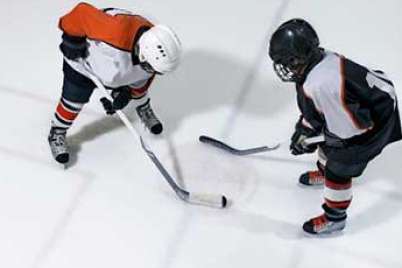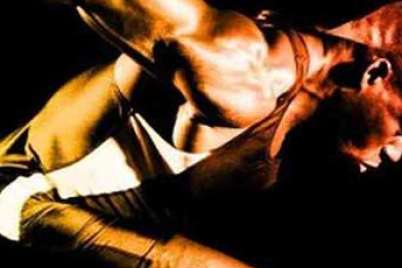
Is Canadian hockey progressing for the better… or the worse?
Is Canadian hockey progressing for the better… or the worse?
If you’re a hockey fan like me, you can’t wait for the Ice Hockey Federation (IIHF) under 20 world championships to begin on Boxing Day. Known as the “World Juniors” in Canada, the tournament is one of the most exciting and fun displays of hockey mastery there is.
Back in 2014, we published an article in which Brent Sutter, the coach of the Canadian squad that year, made the case for a “new normal” in Canadian hockey. Sutter suggested that Canada had to re-imagine its national game to make it more about skills, speed and fun, and that plea resonated deeply with many hockey parents and coaches.
Since that day, the World Juniors has become AfL’s opportunity to reflect on the state of hockey in Canada. So here’s a look at some of the ways the game has improved and our wish list for some components of hockey that could be improved to make the game even better.
Speed, skills, and fun are now the new normal
Watch any panel of analysts during a hockey game or one of the many sports shows on TV and you will keep hearing the same refrain from specialists: today’s professional hockey is played at greater speed and with more skills. As well, the data shows that in the National Hockey League (NHL) the number of fights is in decline.
These advances at the professional level are a blessing for grassroots hockey as young players as well as coaches and parents often emulate the pros. As the culture of the professional game shifts from using violence as a strategic weapon, and replacing it with speed and skills, the culture of minor hockey will follow.
The important shift to an emphasis on speed and skills shows itself as Canadian hockey catches up to other sports and now mandates smaller playing areas for younger players.
In Canada, it is now the policy that players at the “Initiation” level (5-6-year-olds) play games cross-ice, without goalies, using small nets and a lighter puck. When players advance to the “Novice” level (7-8-year-olds) the game goes to half-ice, which is a little larger surface, includes goalies, and the same size and weight pucks as adults.
Reducing the playing surface for the younger players has been controversial but the facts are undeniable: Kids who play on an ice surface that is adapted to their size and age acquire new skills quicker and more importantly, they have more fun playing the game.
Sutter suggested that Canada had to re-imagine its national game to make it more about skills, speed and fun, and that plea resonated deeply with many hockey parents and coaches.
Two ways hockey could improve some more
For the game to keep progressing, there are two elements that should be addressed as soon as possible.
Promote a multi-sport approach
It is important to ensure that kids don’t specialize too early in hockey. Unfortunately, there are still too many kids who play hockey 10 to 12 months a year too early in their development. By too early, we are talking about pre-teen children. To quote a campaign lead by Hockey Canada, Basketball Canada, Soccer Canada, and Baseball Canada, “When kids specialize early in one sport, they miss out on important skills and many get injured, burnt-out or quit”.
Keep hockey affordable
The second cause for concern is the rising cost of hockey. Someone once told me “there might never be another Gordie Howe…” The statement did not surprise me. Also known as “Mr. Hockey,” Howe’s talent and accomplishments are legendary.
But the statement was not about Howe’s extraordinary skills, it was about the fact that he came from a working-class family. Over the years the cost of hockey has increased so much that some say it is becoming a sport reserved for the wealthy. If costs keep rising, enrolment might go down.
Fortunately, hockey has evolved in many positive ways in recent years. Today’s game is about skills, speed, and fun more than ever before. If the hockey world can find ways to keep hockey affordable and promote age-appropriate participation, this positive evolution might continue for a long time.
Go Canada!






Sorry folks but this cross hockey crap will destroy hockey. In the future Canada will no longer be a powerhouse. Sorry I know I am an old fart. But there is no drive today. To many feelings get hurt. Players stop playing. Kids don’t work hard because they don’t have to. They can play no matter what. Can’t bench them they will cry. We are creating participants not players.
This is so true.
Great to read all the comments. To be clear about the development pathway suggested:
1) More multi-sport in pre-teen years. This doesn’t mean no hockey, but not “just” hockey” so kids develop as complete athletes. Especially when they are 7 or 8.
2) A big emphasis on developing critical skills for hockey in the early years and fun, fun and more fun so all kids have a blast and fall in love with the game.
3) In early teen years, kids who want to be serious hockey players should begin to specialize in hockey. And again, keep developing skills and make it fun, fun and more fun (you get the picture).
This pathway is key because if you look at a group of 14 year old hockey players, some are almost full grown and others are still children. Often, some late developers are awesome players, but they can’t compete YET with the stronger early developers… So let’s make sure every player get’s a chance to develop the right skills early, and when they CHOOSE to specialize, let’s make sure they keep developing and achieve their potential.
One of the main reasons for all these hockey academies that are attracting our young talented hockey players away from grass roots minor hockey and robbing their parents cheque books is the Western league Bantam draft. I would love for someone in the so called hockey world to clarify, how pressuring these young kids at 14 into believing that if they don’t go in the draft their dreams of becoming a BIG leaguer is over. Let the kids be kids. And for all you parents out there with deep pockets( and worse yet, those that don’t and mortgage the house) money doesn’t make hockey players. The love of the game, determination and genetics is what makes hockey players.
Well said!
Amen. This is somewhat different for female hockey but you still have people trying to and succeeding at convincing families the only way for their child to succeed is to spend 25,000-30,000 and sometimes 40,000 per year to play hockey. To attend camp after camp at 450.00 to 600.00 for 3 to 4 days for identification. They are chasing bad money. Even if get a 15,000-20,000 dollar scholarship it is negative money. Stay home play for your local AAA programs not an academy that gets you no more opportunities. 19 of 26 players that won USport National championships last season cam from local teams within the Manitoba AAA Female Midget Hockey League. Enough said.
I agree, but the Bantam draft also really motivates players to become better hockey players. The ones who don’t get drafter just aren’t good enough yet, and have to work harder.
Another big thing missed out on by youth today is the lack of street hockey. There is no better way to practice puck control than on uneven ground with a ball that wants to roll away on you and friends trying to take it away. Instead of playing hockey on a video game, kids need to get outside and practice.
Too many old school coaches and GM in Canada that still think bigger is better than faster.
I agree 100%!
I played up to Junior A tier II and although I was quicker, more skilled, and put up better numbers than several of my “larger” teammates, they got NCAA scholarships/WHL/NHL drafts.
The excuse always being I was too small 5’5 and 165 playing weight. Funny thing was, I was already doing my thing against bigger opponents, and would have continued at the next level. I played with Brind’Amour, Scotty Pellerin and the likes. Played against Lindros (great hype, great crap-out) – always held my own.
This was late 1980’s – early 1990’s when hockey was alot more thuggery and “crash-boom-bang”.
So, I took the hint, got my education – went to Medical School – and now I’m actually glad hockey didn’t pan out. Still play in the over 35 local league and have a blast.
Funny how things work out!
If you think hockey is expensive, just check out gymnastics! Yes, the travel for rep teams is expensive but can be managed if you work with other parents to offset it. Send your child with someone else, and then return the favour for the next tournament for example. My kids both play hockey and since my daughter switched from competitive gymnastics I can’t believe what they get for the cost. Do they have the absolute best equipment available…no. Are they successful regardless…yes. You get to make these decisions and can ignore the pressure to spend if you actually want to. I think it’s brilliant that until atom the kids play cross ice with fewer games. I think it would be even better if girls hockey was better supported in atom league to allow them to leave mandatory inter league play to focus more on finding other female teams to play against. As for the juniors shitting the bed this year, I think if anything needs to change it’s not alllowing players under the age of 15 to go to these academies. That’s what’s hurting minor hockey development the most, in my opinion.
I didn’t really include the fact that my bantam rep aged son has played since initiation, both through house and rep programs so I do have that perspective as well.
On affordability, maybe it should be imposed by our Country wide hockey associations the use of wooden hockey sticks until 16 years of age or midget level.
Wooden sticks are still available. No one is forcing anyone to buy their kid a $150 stick. If a parent wants to do that, go for it. An optional piece of equipment isn’t what is affecting the cost
If you don’t make minor hockey more affordable for Canadian kids it will be a game for the wealthy, leaving many kids that won’t enjoy the fun and a chance to develop into, what could be, a national star.
With all those programs for young hockey players, there will be a good future for the sports in Canada. The young bloods will be prepared enough for the world competition.
?? This is the exact opposite point of what this article is highlighting. Less elite/specialized programs. More fun. Lordy.
“Fun” does not mean the same thing for everyone. For some kids it means competing at the highest level they are capable of, and there is nothing wrong with that.
More specialization if what is needed, more focus on skating, edgework and proper puck handling and shooting at a young age is what’s important. Practice makes perfect is the motto to live by.